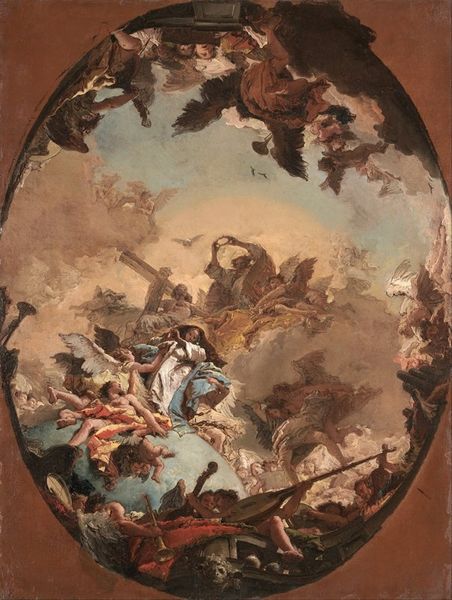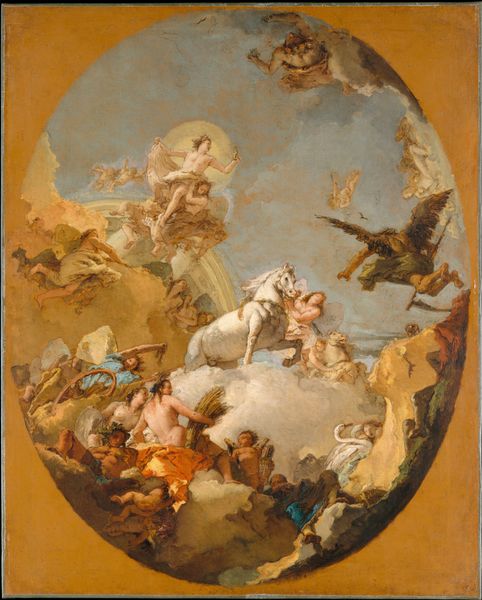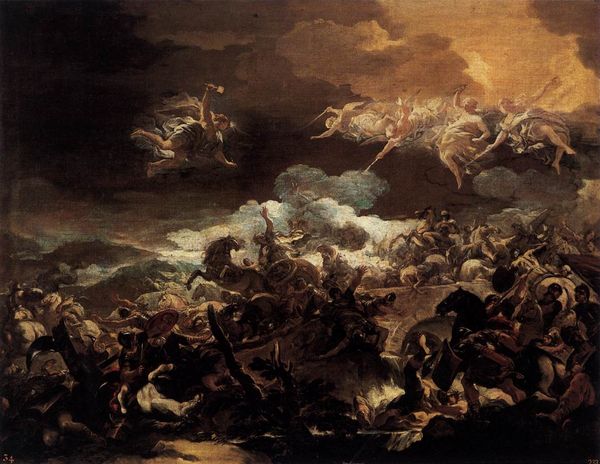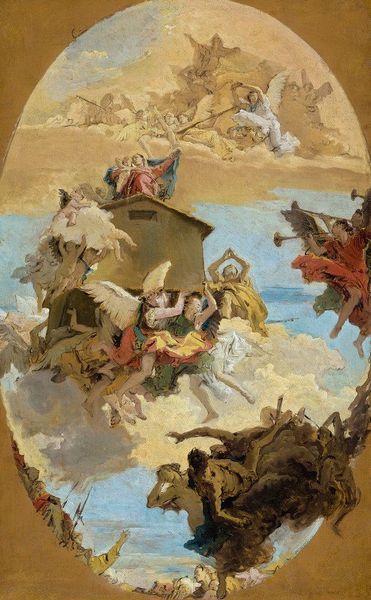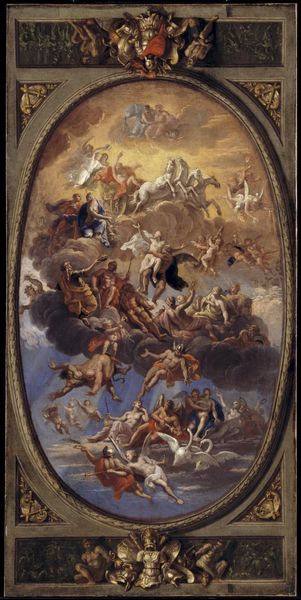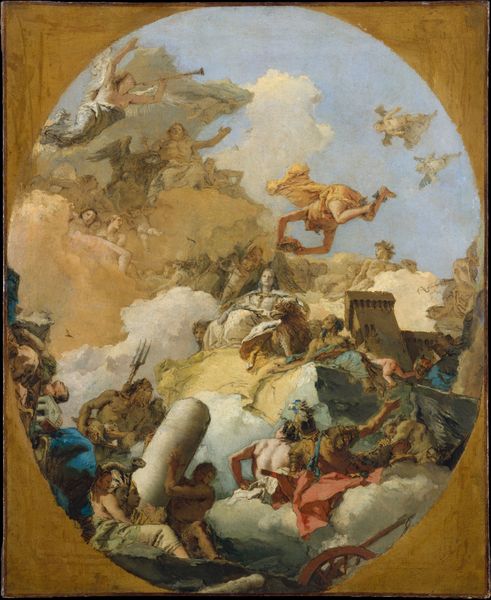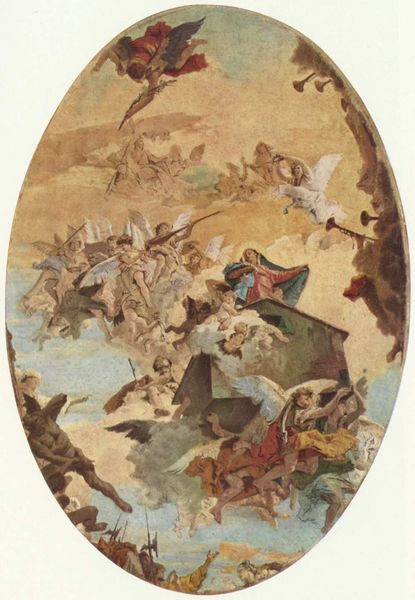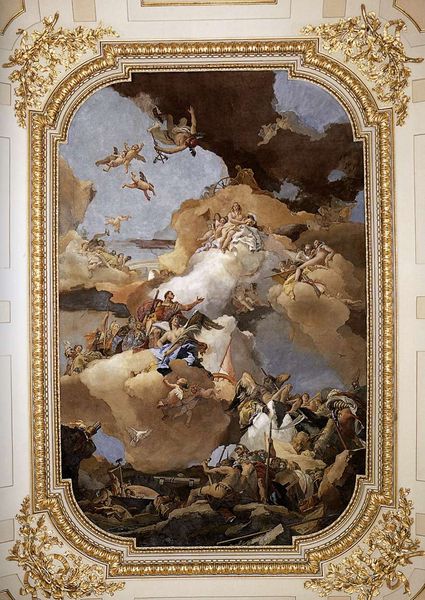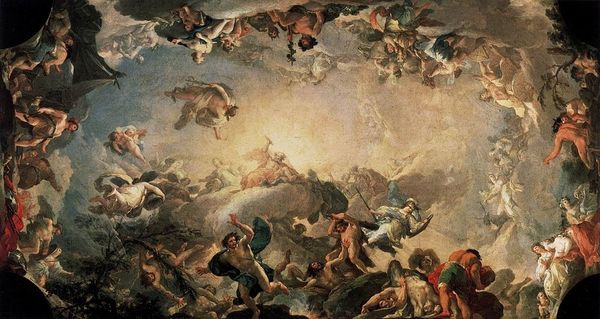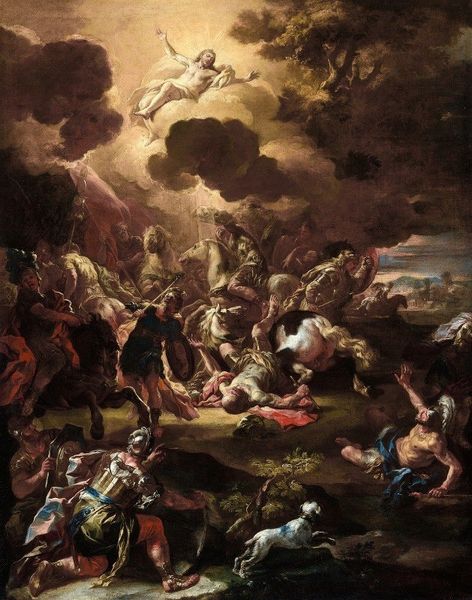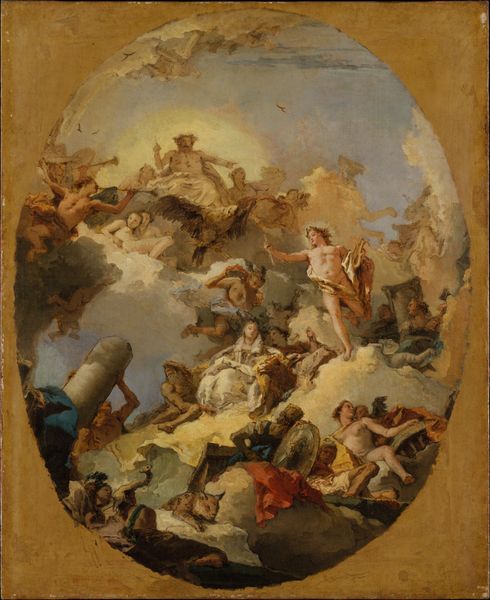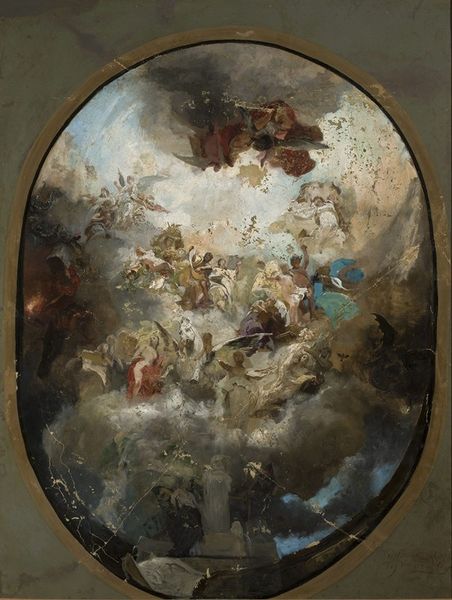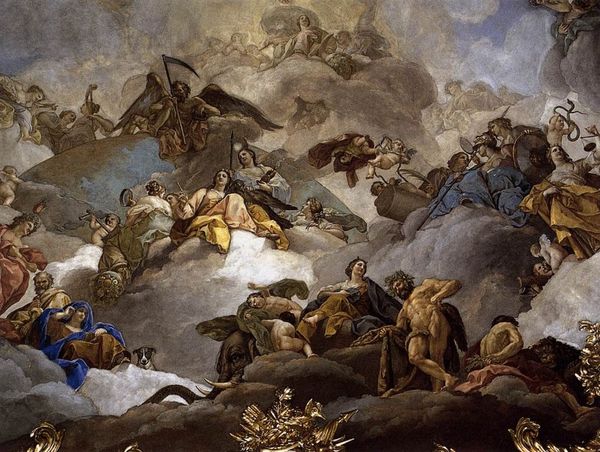
Dimensions: 102 x 85.5 cm
Copyright: Public domain
Editor: So, here we have Giovanni Domenico Tiepolo's "Apotheosis of Hercules" from 1765, done in oil paint. The way all the figures are swirling makes it seem so chaotic and energetic. How do you read a work like this? Curator: From a materialist perspective, consider the economic and social conditions that allowed Tiepolo to even *produce* a piece like this. The canvas, the pigments... These weren't accessible to everyone. What kind of patronage funded this glorification of mythological power? Editor: I hadn't really thought about it in terms of who could *afford* to make it. I guess I was just focused on the story it tells. Curator: Right, but *how* is that story told? Look at the pigment choices. The light blues and pinks are luxurious—ground minerals, likely imported. The technique too—oil allows for blending and layering to an extraordinary level compared to, say, fresco. Each careful brushstroke signifies immense time, skill, and expense. Do you see that connection to consumption and production here? Editor: Definitely. It's like the *medium* becomes part of the *message*, about wealth and power. So, this kind of rococo extravagance itself reflects societal values, like conspicuous consumption, even? Curator: Precisely! And think about the labor involved, from mining those pigments to preparing the canvas. Art production wasn't—and *isn't*— a solitary endeavor. Recognizing that expands our understanding of the "Apotheosis," doesn’t it? Editor: Absolutely! It's no longer just about the mythological story but also about the material circumstances that allowed its creation, giving it an even greater relevance for our times. Curator: Yes, considering its context within networks of labor, wealth, and consumption really changes how we view the work.
Comments
No comments
Be the first to comment and join the conversation on the ultimate creative platform.
